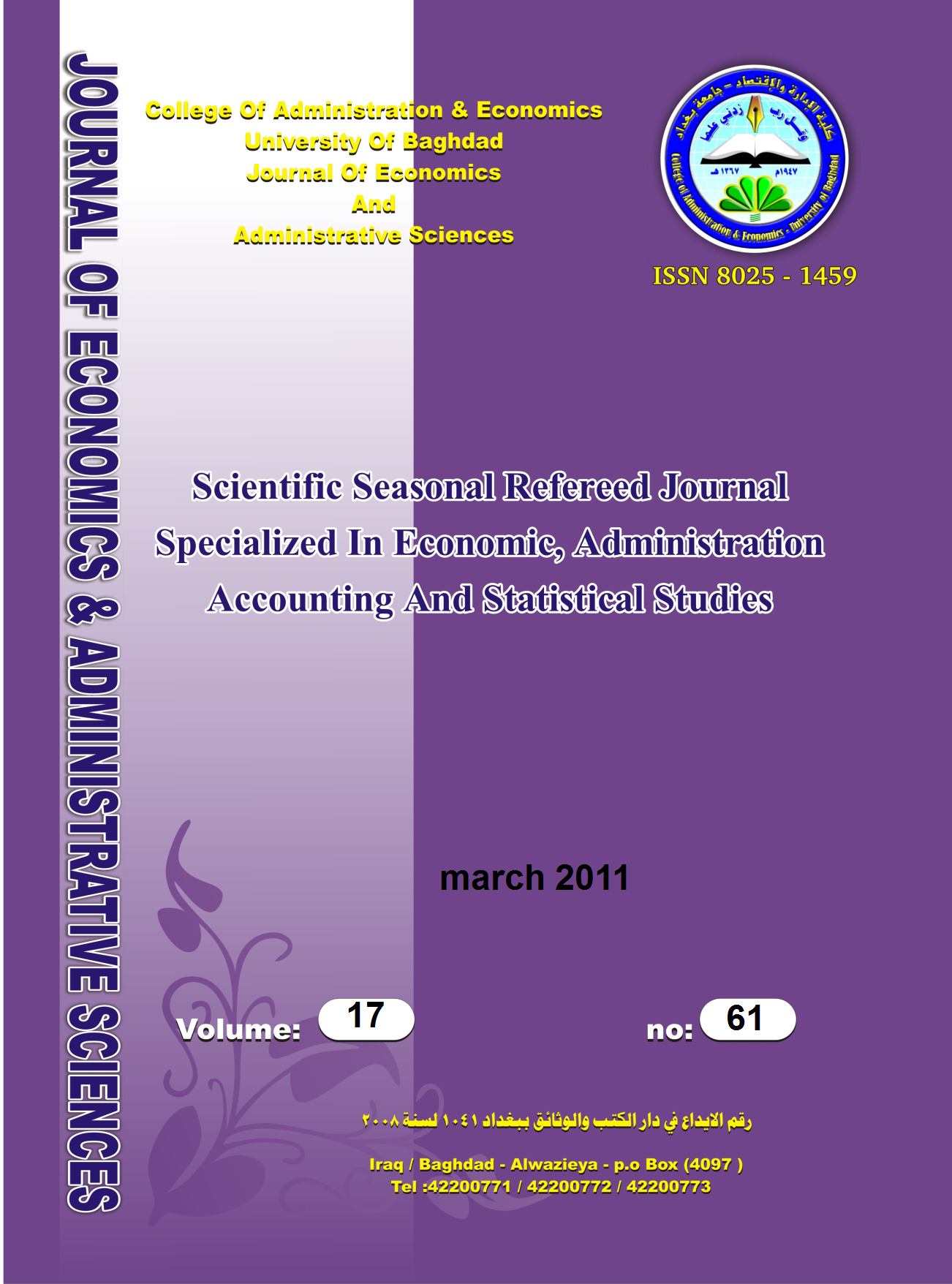Study of the marketing supply chain of the fuel oil productUsing transport models
DOI:
https://doi.org/10.33095/jeas.v17i61.1081Keywords:
Study of the marketing supply chain of the fuel oil productUsing transport modelsAbstract
The marketing logistic chain, as an integrated system aimed to balance the achievement of its main opposite objectives which represented in the access to the best service presented to the customer with lowest possible logistic costs especially the transportation costs, where encourages the researcher to choose the second objective as a field of this study in order to reduce the transportation costs in the final link of marketing logistic chain which related to delivering of fuel oil to the customer that falls within organizational responsibilities of the company under consideration (Oil Marketing Company) and also known in a brief name by (SOMO) through two methods, the first is by functioning quantative techniques by using transportation models, and the second is by using descriptive methods through the interviews which determines the reality of fuel oil marketing logistic .
Thus, this study was based on a major hypothesis of "monthly using of transportation models during all the years of the study that concentrated on the distribution of standardized product such as fuel oil from loading depots to the available exporting destinations land, could achive the optimal distribution for fuel oil with lowest possible transportation cost or higher revenues three dimensions represent radical solutions to the long-term problems that company under consideration has suffered such as high transportation costs as a result of obstacles that face the fuel oil marketing logistic activities.
Depending upon the ready computer programmers called quantities systematic business (QSB) for processing the data related to transportation costs in dollar or through the manual application of the data transportation models related to exporting revenue in Iraqi dinar, and then comparing the optimal solution produced from the transportation models related to the actual data of costs and revenues. An also on the other side the descriptive data that has been gathered from the interviews in the mentioned company were enabled the researcher to determine the actual reality of final link on the marketing logistic chain of fuel oil and its surrounding logistic problems thereby the above hypothesis has been proven, and arrived to a number of conclusions and recommendations.
Downloads
Published
Issue
Section
License
Articles submitted to the journal should not have been published before in their current or substantially similar form or be under consideration for publication with another journal. Please see JEAS originality guidelines for details. Use this in conjunction with the points below about references, before submission i.e. always attribute clearly using either indented text or quote marks as well as making use of the preferred Harvard style of formatting. Authors submitting articles for publication warrant that the work is not an infringement of any existing copyright and will indemnify the publisher against any breach of such warranty. For ease of dissemination and to ensure proper policing of use, papers and contributions become the legal copyright of the publisher unless otherwise agreed.
The editor may make use of Turtitin software for checking the originality of submissions received.


























